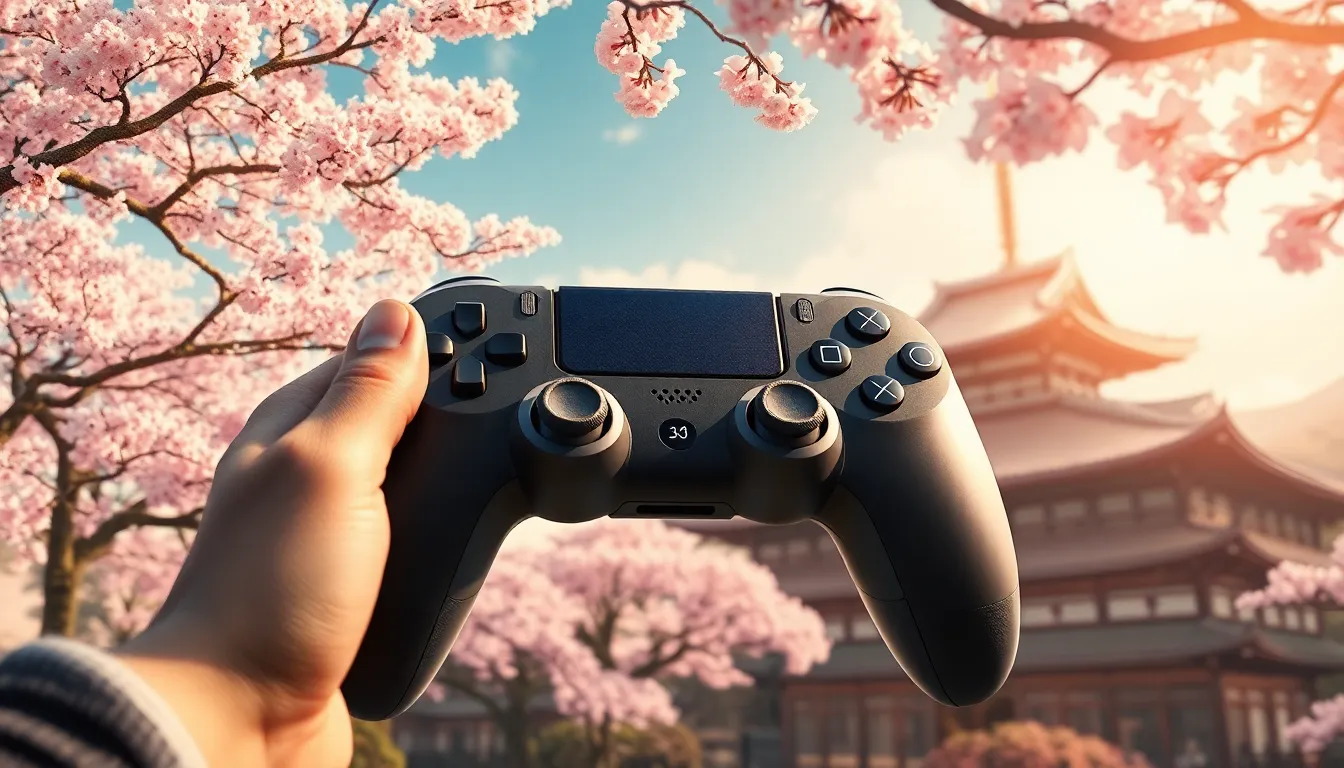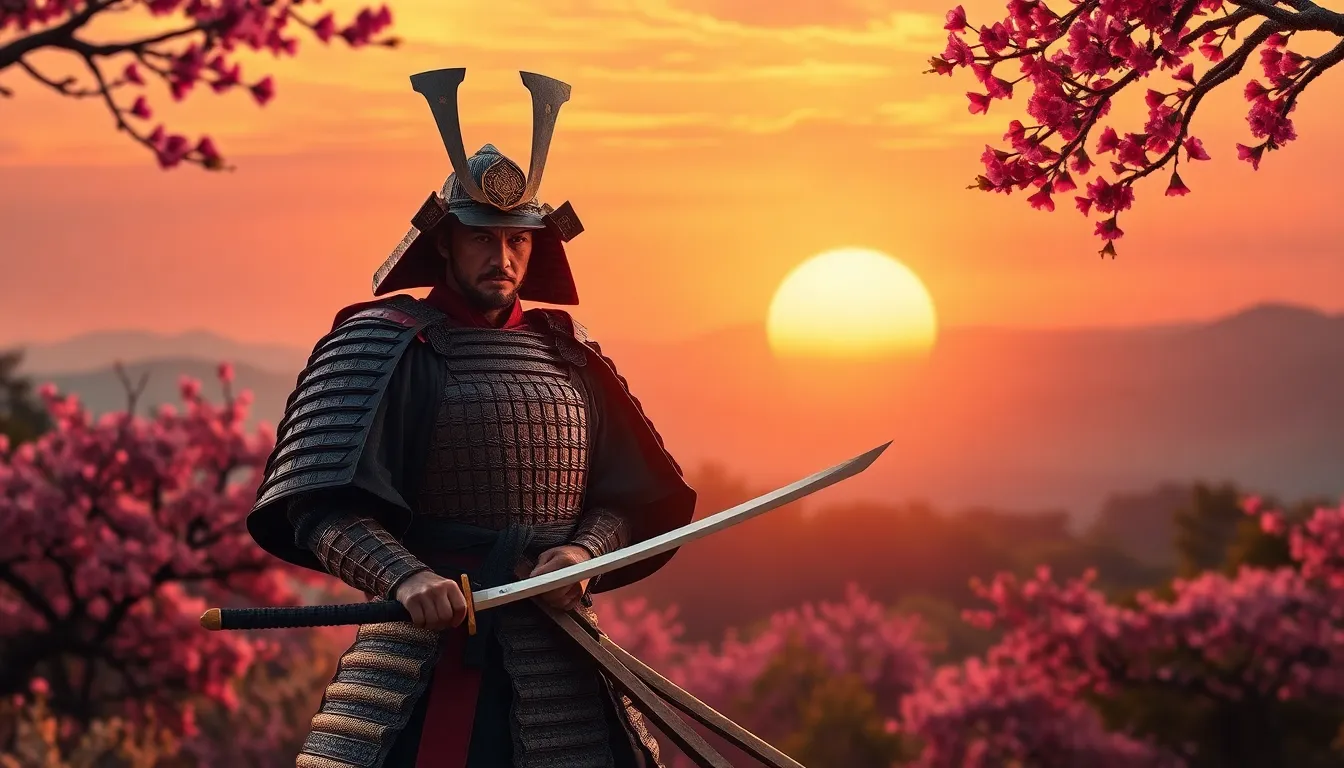In a world where samurai battles and breathtaking landscapes collide, Ghost of Tsushima takes gaming to a whole new level. But what if the experience could feel even more immersive? Enter the adaptive triggers of the PlayStation controller—those little buttons that pack a punch and make every swing of Jin Sakai’s katana feel like a real-life duel.
Imagine feeling the tension of a bowstring as you pull back, or the satisfying resistance as you charge into battle. It’s like having a mini workout while sitting on your couch! These adaptive triggers don’t just enhance gameplay; they turn every encounter into a heart-pounding experience. So grab your controller and prepare to dive into a world where every click and squeeze pulls you deeper into the stunning saga of honor and revenge.
Table of Contents
ToggleOverview of Ghost of Tsushima
“Ghost of Tsushima” offers a rich and immersive experience set in feudal Japan, focusing on the conflict between samurai and Mongol invaders. Players step into the shoes of Jin Sakai, a skilled samurai tasked with protecting his home and people. Exploration and combat mechanics define gameplay, promoting interaction with a beautifully crafted open world filled with dynamic weather and wildlife.
Combat in “Ghost of Tsushima” stands out, thanks in part to adaptive triggers designed for the PlayStation controller. These triggers simulate tension when drawing a bow, enhancing the player’s emotional connection to the action. Resistance when charging towards enemies creates a sense of urgency, adding layers of realism to encounters.
Exploration rewards players with various collectibles, improving their skills and abilities. Engaging in side quests and discovering hidden shrines deepens the narrative, while providing insights into Japanese culture and history. The game emphasizes player choice, allowing different approaches to combat and interactions with characters.
Narrative arcs revolve around honor and revenge, adding depth to the overall experience. Every decision impacts the storyline, leading to multiple endings based on player choices. Music and visuals further immerse players, elevating the connection to Jin’s journey.
“Ghost of Tsushima” combines action, exploration, and storytelling to create an unforgettable experience. The integration of adaptive triggers enhances the engagement, ensuring players feel every moment of tension and excitement as they navigate Jin’s path to becoming the Ghost.
The Role of Adaptive Triggers

Adaptive triggers play a crucial role in enhancing the gameplay experience of “Ghost of Tsushima.” These features enrich player interaction with the game, creating a connection that intensifies each battle moment.
Functionality in Gameplay
Adaptive triggers provide varied resistance based on in-game actions. Pulling back a bowstring, for instance, requires force that increases as tension builds. Engaging in combat with different weapons activates distinct feedback, allowing players to feel unique sensations for each action. Players encounter thrilling scenarios where releases and impacts translate into tactile sensations. Every movement becomes vivid, ensuring that Jin’s journey resonates with an authentic feeling of combat.
Player Experience
“Ghost of Tsushima” delivers an engaging experience enriched by the PlayStation controller’s adaptive triggers. These features immerse players deeper into the game’s world, transforming every combat encounter.
Feedback from Gamers
Players consistently praise the adaptive triggers for their contribution to realism and immersion. Many express how the tension of pulling back a bowstring creates a sense of authenticity during archery. Others highlight that the varying resistance when charging into battle adds excitement and urgency. Gamers also mention how each weapon provides distinct feedback, allowing for a personalized combat experience. Overall, these responses underscore the adaptive triggers’ role in enhancing player satisfaction and investment in the game.
Impact on Gameplay Mechanics
Adaptive triggers revolutionize gameplay mechanics by providing responsive feedback during combat. Resistance increases as players draw their bows, simulating real-life tension and enhancing strategic decisions. Different weapons also yield unique sensations, creating a diverse feeling for battles. This tactile experience influences combat choices, encouraging players to adapt their strategies based on weapon feedback. Additionally, the immersion generated by the triggers reinforces the game’s narrative themes of honor and revenge, engaging players at a deeper level.
Technical Aspects
The technical components of “Ghost of Tsushima” significantly enhance the gaming experience, particularly through the use of adaptive triggers. These features integrate seamlessly into the gameplay, amplifying immersion.
Hardware Requirements
PlayStation 5 provides the necessary hardware capabilities to utilize adaptive triggers effectively. This next-gen console equips gamers with a DualSense controller that supports enhanced feedback features. Players experience precise resistance levels during various in-game actions. For instance, pulling back a bowstring requires more effort as the tension increases. These demands on hardware contribute to realism, ensuring each action feels authentic. Gamers must also consider keeping their console software updated to access full functionality.
Compatibility with Other Games
Adaptive triggers in “Ghost of Tsushima” stand out compared to similar features in other titles. Many games adopt this technology to elevate their immersive qualities. For example, titles like “Spider-Man: Miles Morales” or “Demon’s Souls” showcase varying resistance during gameplay. However, “Ghost of Tsushima” utilizes adaptive triggers to a much greater effect, enhancing combat and archery experiences uniquely. Other games may offer similar mechanics, but the synergy with the game’s narrative themes elevates it further. This rich interaction encourages players not just to engage but also to adapt their strategies dynamically.
The adaptive triggers in “Ghost of Tsushima” significantly elevate the gaming experience by immersing players in the heart of feudal Japan. Each pull of the trigger not only enhances combat realism but also deepens emotional engagement with Jin Sakai’s journey. Players feel the weight of their choices and the tension of each encounter, making every moment more impactful.
This innovative use of technology sets “Ghost of Tsushima” apart from other titles, allowing players to truly connect with the game’s narrative and mechanics. As they navigate the challenges of honor and revenge, the tactile feedback provided by the DualSense controller ensures that every action resonates. Ultimately, the adaptive triggers contribute to an unforgettable adventure that keeps players coming back for more.




